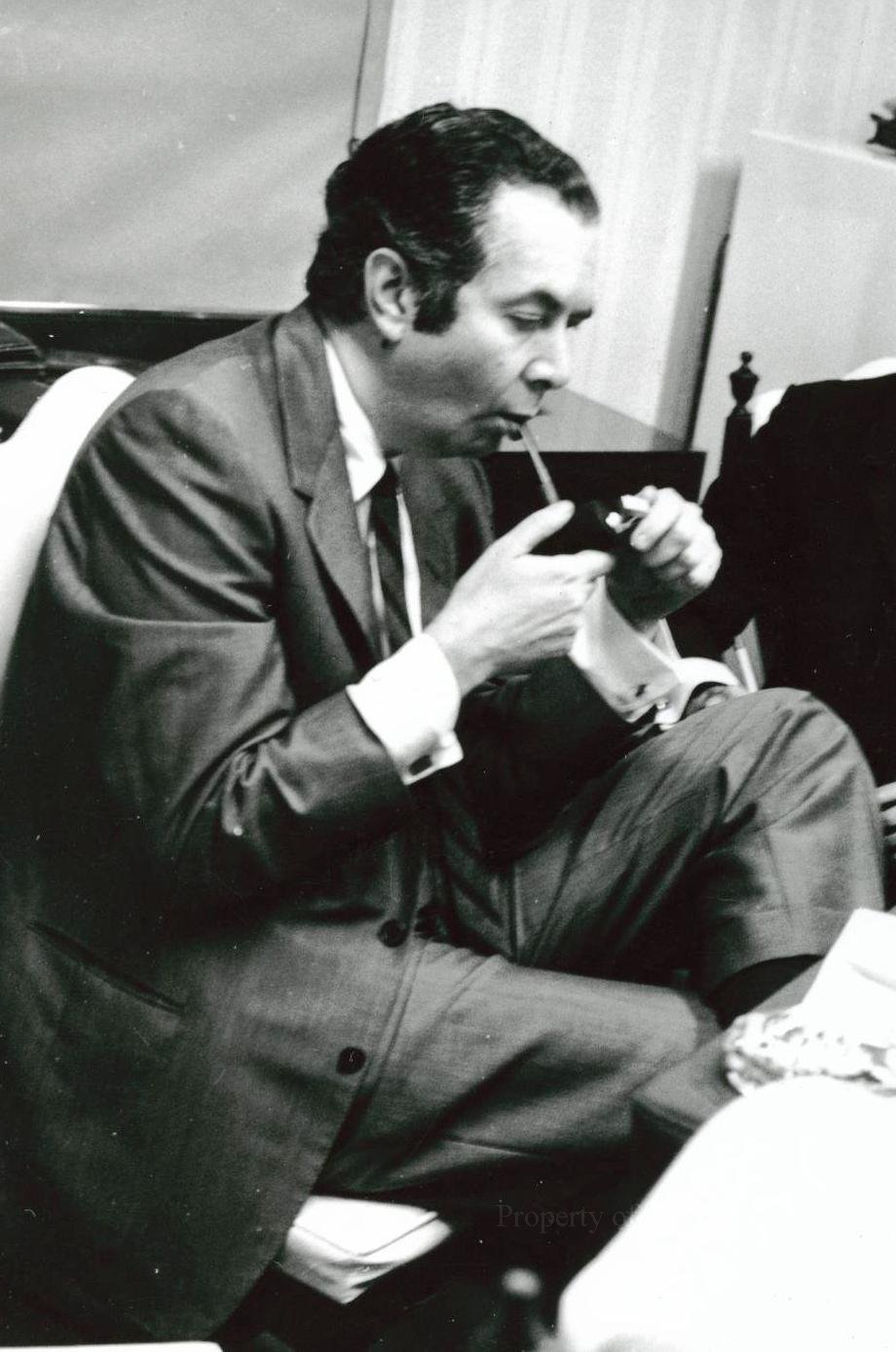In the 1951 May-June issue of the Bulletin, the first full deal with analysis appeared. Editor George Beynon prefaced its appearance with, “In this issue we offer a bridge hand in which the comments, opinions and analysis are those of the writer and do not necessarily reflect those of the League or of its editorial staff. If you like this feature, write us; if you don’t agree with the author, write him. This feature is presented for your pleasure, not to raise your blood-pressure.”
The Winning Play
By George Rapée
After the Eastern had run its course, I asked Edgar Kaplan for an interesting hand from the Goldman Pairs for use in the Bulletin. He brooded a while and produced a number of hands – none of them from the tournament. I patiently explained that I wanted a hand from the tournament, not from some long departed duplicate. I was absolutely firm on this point.
Here is a hand, one of Kaplan’s favorites – from a 10-table duplicate played several years ago. By the way, Kaplan did not win the duplicate. But I think you’ll agree the neat defensive play involved merits your attention. Kaplan is South.
| Dlr: West | ♠ — | |||||||||||||||||
| Vul: All | ♥ A K 8 6 5 4 | |||||||||||||||||
| ♦ A 7 6 3 2 | ||||||||||||||||||
| ♣ 5 4 | ||||||||||||||||||
| ♠ A Q 8 7 4 | ♠ J 10 9 6 5 | |||||||||||||||||
| ♥ J 9 7 | ♥ 3 2 | |||||||||||||||||
| ♦ K Q | ♦ J 10 9 8 | |||||||||||||||||
| ♣ K 10 9 | ♣ 3 2 | |||||||||||||||||
| ♠ K 3 2 | ||||||||||||||||||
| ♥ Q 10 | ||||||||||||||||||
| ♦ 5 4 | ||||||||||||||||||
| ♣ A Q J 8 7 6 | ||||||||||||||||||
|
||||||||||||||||||
North opened the ♥ K and continued with the ace. When Kaplan dropped the ♥ Q, North played a third heart, hoping partner could overruff dummy. The play at this point had gone in a leisurely manner, giving Kaplan more than enough time to analyze the hand. It seemed likely that North was void in spades and probably that four hearts would have made for 620 points. The task at hand was for the defense to set declarer three tricks. When North played the third heart declarer ruffed in dummy with the 9. Kaplan casually discarded the ♦ 5, apparently unable to overruff. Declarer now played a spade from dummy and when South followed low, declarer confidently played his ace. He waited expectantly for North to drop his blank king. The diamond North produced was met with a look of horror. From here on, declarer was helpless. He played another spade which Kaplan won with the king. The blow fell when Kaplan played his last diamond, partner won the ace and Kaplan then obtained the desired diamond ruff. The ace of clubs accounted for the sixth trick for North-South and for the necessary 800 points.
Of course there was considerable discussion between East-West. “Yes,” West explained to partner, “I have heard of that play called a finesse,” but here his face grew crimson with controlled aspiration, “How could I figure him for the king when he didn’t overruff the heart?”
East, of course, would have no part of this. “Couldn’t you see what he was doing?”
Well perhaps. It’s always easy afterwards. Nonetheless it was a neat play and apt to work against almost anyone. However, it wouldn’t have succeeded against you or me. Or would it?

